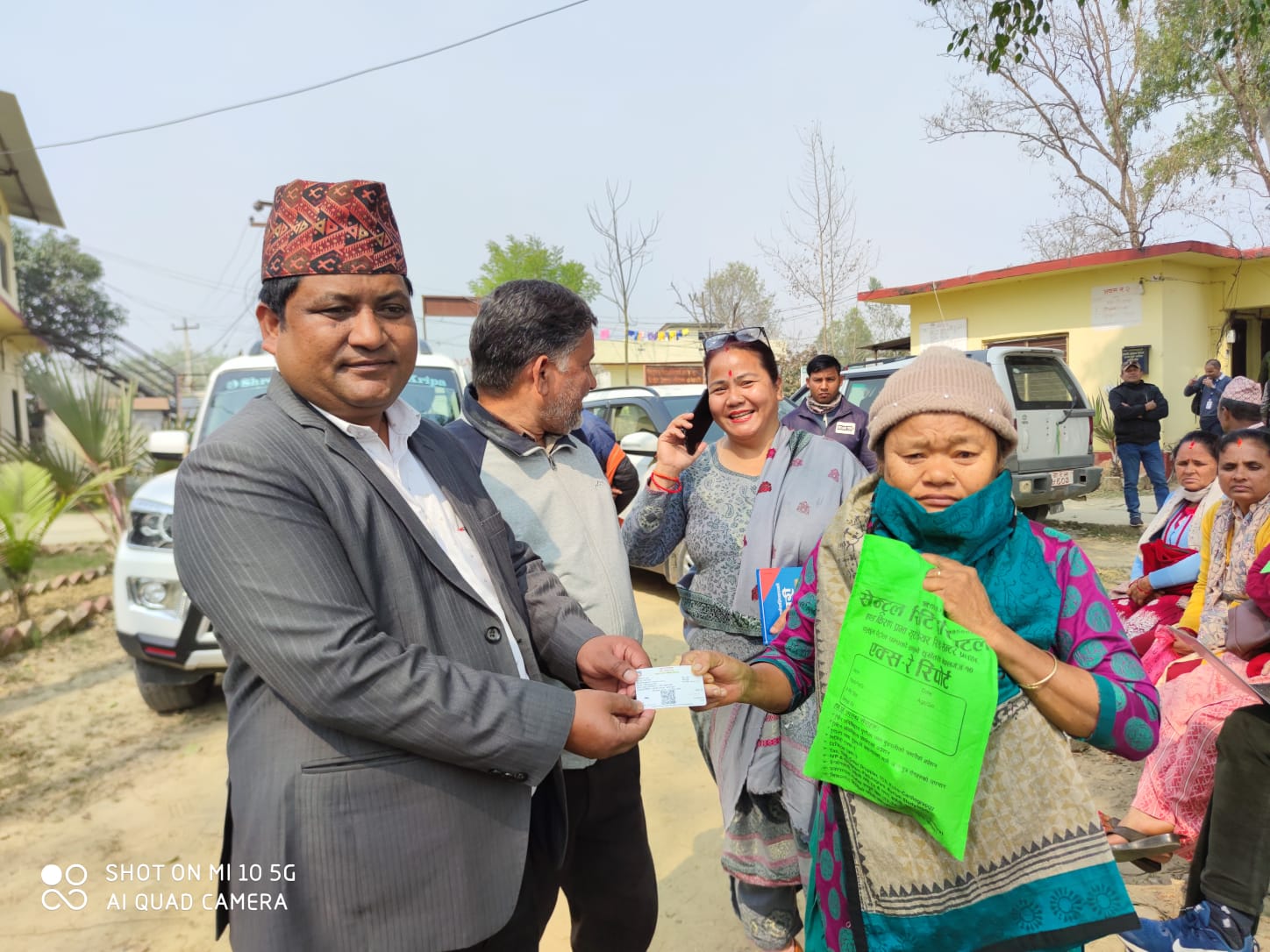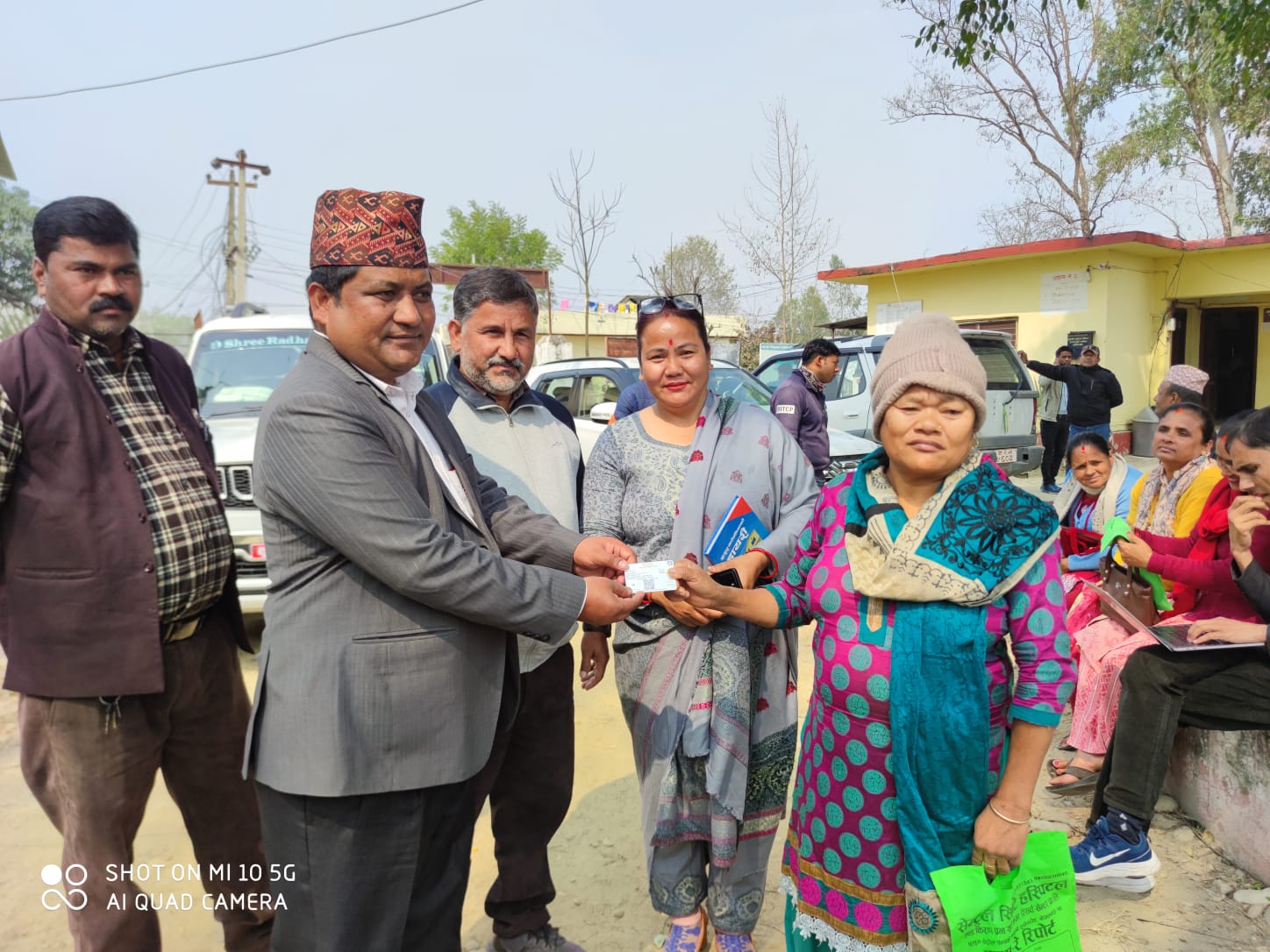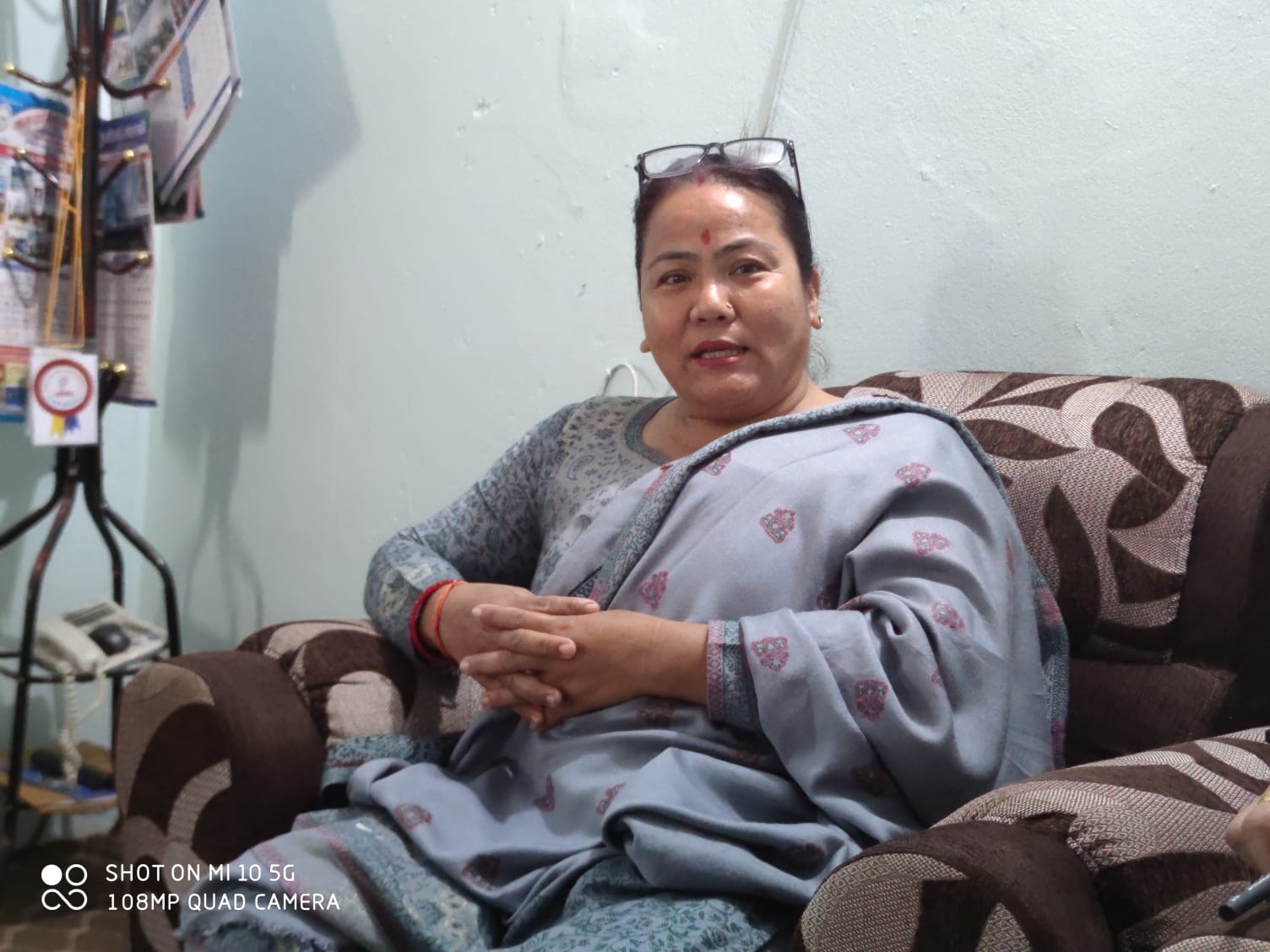By using digital tools several local governments have helped to ease service delivery and local governance. The innovative approach is promoting transparency from local to federal structures.
Towards Digitization
April 25, 2024

Khajura, Nepal
One afternoon in early February Suresh Shahu, an information officer working for Khajura Rural Municipality, was just focused on responding to emails flooded into his desktop computer.
Atop email notifications, one was sent by Manbir Chhetri, chairman of ward no. 1. It’s a letter sent to the rural municipality chief requesting to accept the names list of unemployed youths willing to work for the flagship prime minister employment program. The employment program arranges a maximum 100-day job for unemployed people in a year.
Stationed at the second floor of Khajura rural municipality office in the district of Banke he went through a long list of email notifications and responded to them one by one. Some of those emails were related to individual applications made for obtaining recommendations to get citizenship cards, national ID cards and others were email notifications related to revenue deposit for land transactions, inquiries about housing design and service delivery related complaints.
“I will forward this to the chief executive officer and head of the employment program,” said Shahu going through the letter, “Based on their discussion the chairman will take a final decision. Thereafter, I need to notify the ward office through email.”
No matter whether the issue of recommendation from ward office or individuals, job application, revenue collection and registration of complaints to entire service delivery Khajura rural municipality handles them digitally. Service seekers no longer appear before the rural municipality office in person.
Unlike past practice of service seekers queuing before office, Khajura rural municipality deals most day-to-day affairs digitally. Digital cards are distributed to ensure transparency in distributing social security allowance. So, is the practice in salary disbursement. E-bidding is mandatory to award development projects and contractors are paid digitally.
Online revenue payment system is in practice. For this, ward offices facilitate service seekers digitally and the royalty is directly deposited to the municipality's bank account. Key social media platforms – Facebook, Twitter, Youtube, TikTok– are used to disseminate information related to employment, public notices and public tendering.
“Since last February, we have not used the cheque for payment. Ours is a checkless office and we are in the final stage of making it a paperless institution,” said Dambar Bahadur BK, chairman of Khajura rural municipality adding, “That will be possible when we complete our household profile project.”

In an effort to digitize vital registration the office has started to distribute biometric ID cards for persons with disability and senior citizens. Before introducing digital cards, even elected people’s representatives used to manipulate the status of disabled people to favor people loyal to them, officials say. Now, changing biometric details is impossible. Old age pension is being disbursed into their bank accounts.
“The biometric card ensures transparency. No one can replace digital photos and manipulate details such as disability category to claim monthly allowance,” said Bas Bahadur Rana, chief executive officer of the rural municipality, “Once they receive digital cards, they can collect allowance from any nearby bank.”
Beneficiaries said the biometric card issued by the rural municipality is far better than the previous paper card. Saurav Sharma, 21, Khajura-8, Raniyapur, was one among scores of persons with disability waiting for a biometric card.
“It’s safe from water and includes our every detail,” said Ms. Sharma, a hemophilic patient, “Based on the ID card, the ward office sends money to Agricultural Development Bank’s Khajura branch. No need to come to the rural municipality. The IT system works automatically.”
Journey Towards Digitization
A year ago, the municipality began digital card distribution. Service seekers are happy to have digital ID cards. Now, it’s hard to manipulate cards.
The municipality is collecting revenue online. Username and password are provided to the ward office from the rural municipality office. Internal payment, advance payment and project funds are paid via Sub-National Treasury Regulatory Application (SUTRA). Already listed among a few institutions to begin cheque-less transactions the rural municipality is in process of making it paperless.
The rural municipality is establishing Lumbini Provincial Technical University within its territory to develop western Nepal as an IT hub. The university is now running from Nepalgunj Forest Office complex. “We want to relocate the university within our municipality and develop it as an IT hub. Human resources educated from the university will be used for preparing household profiles,” said chairman BK, “Once household profiles are readied, people from my rural municipality will get 100% digital access in service delivery.”
Khajura, the third largest rural municipality in terms of population, has allocated Rs 3 million in this fiscal year to complete the task of household profile. Every detail of 14,000 households will be collected to ensure digital service to 62743 people staying in the rural municipality.
“Life without IT is so difficult,” said BK, “So, making this rural municipality 100% digital is our target. For this housing profile a must.”
CCTV cameras are installed in schools, roads and offices. Integrated CCTV cameras installed in the municipality monitor scattered cameras. This has helped to control crime cases and get updates across the municipality.

Khajura rural municipality vice-chairperson Manju Malla
Digital Revolution
IT has become a part of life. Local governments are using the latest technology in various sectors– health, education, disaster risk reduction, banking and agriculture. This has been possible as the number of internet users is increasing significantly in recent years.
According to the Nepal Telecommunications Authority, the internet penetration is 131 percent of the population. The fixed broadband is accessed by 33 percent of the people, while the mobile broadband is accessed by 98.46 percent.
“Apart from service delivery, we are using information technology to prevent disaster risks. Smart boards are used to teach school students digitally,” said Manakala Kumari Chaudhary, deputy mayor of Rajapur Municipality, Bardiya.
Three top secondary schools in Rajapur are following digital teaching pedagogy. Based on digital content, teachers use computers to teach students. Internet connection helps teachers to address their queries instantly.
Early warning notifications have saved people from floods. “Because of early warning notifications and IT supported disaster preparedness not a single person has died in a flood since I took charge of office,” said Chaudhary, who is working as deputy mayor for the last seven years.
These days, local governments are competing to use IT for making their service delivery faster and more efficient. This sort of competitiveness was created after the PLGSP was launched in 2019. The PLGSP is a flagship programme of the Government of Nepal funded by Switzerland, Norway, the United Kingdom and the European Union, with UNDP Nepal as a technical support provider. One of the key objectives of the Programme is to ensure provincial and local governments have the capacity and promote inclusive development, transparency, equitable governance in line with the spirit of the Constitution.
After the country adopted the federal set up, the program supported creating websites of local governments, arranged IT officers in each local government, and trained them to enhance their capacity.
Nagesh Badu, information technology and e-governance specialist, says innovative approaches in the information technology sector began after the federal affairs and local development ministry appointed IT officers in each local government, arranged training for them and provided guidelines for uniform websites.
“This all started with that innovative approach in the information technology sector,” said Badu adding, “Support in software systems has now encouraged them to make digital banking transactions. Use of the Sub-National Treasury Regulatory Application (SUTRA), an accounting software, has made digital transactions possible.”
The software is used to formulate annual plans and budgets of local governments and track their realtime expenses. Local governments are using this application and the Financial Comptroller General Office monitors their activities electronically. Real time data publication helps the government to take updates about the economic healths of local governments.
Real time data are available for monitoring authority but not for public and provincial governments. Public access to those data will avoid duplication in allocating provincial and federal budgets. Provincial governments have been demanding data sharing.
Experts involved in promoting e-governance say local governments are heading towards the path of digitization. But provincial governments seem lagging behind in digitizing their system. Out of seven four have developed an e-governance master plan. But their plans, according to knowledgeable officials, lack coherence.
“A high-powered authority should be formed to oversee and coordinate inter-governmental digitization drive,” said Badu adding, “Otherwise, there’s risk of misusing resources as different vendors are involved in developing haphazardly. Knowledge transfer can also be a problem.”
Despite some challenges– regular update, maintenance, inter-governmental coordination and privacy concerns, the use of information technology has eased service delivery at the local level. Local governments are committed to making them IT friendly.
“Journey of digitization is not free from challenges. But don’t have other options but to transform local governments as smart offices,” said rural municipality chairman BK adding, “Those not having IT knowledge are considered illiterate in today’s world.”
***

 Locations
Locations



